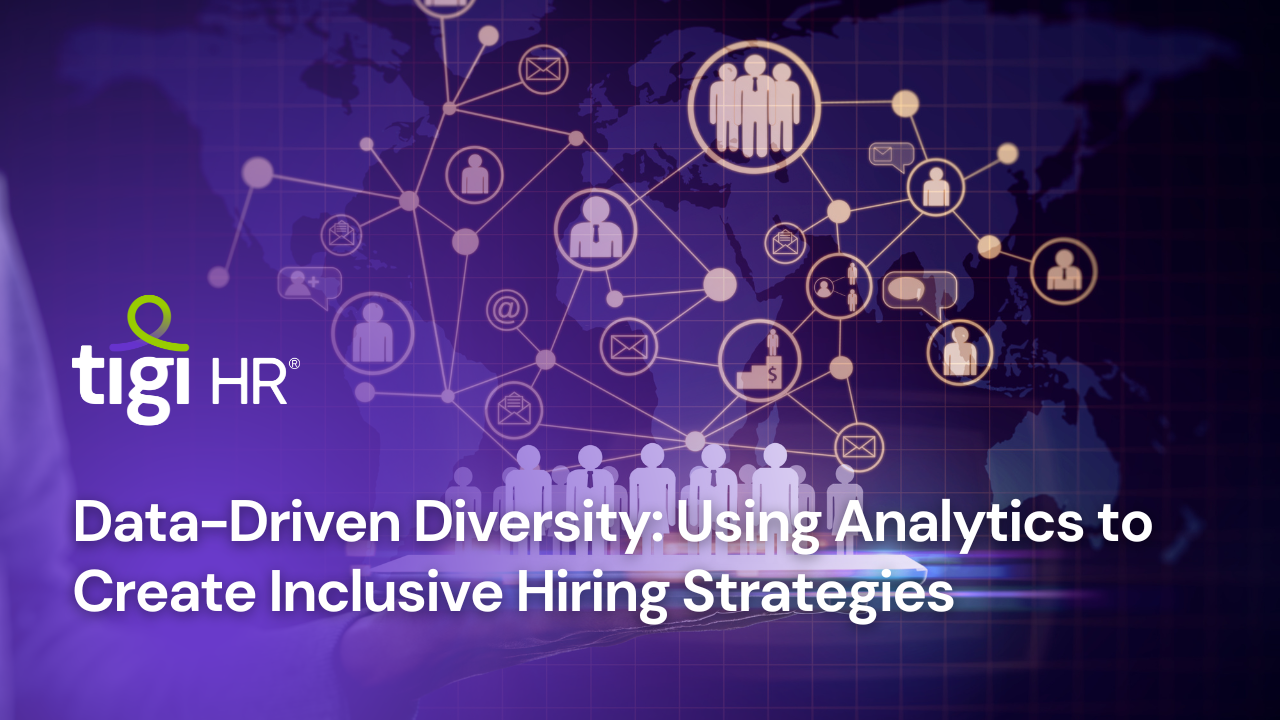Diversity and inclusion (D&I) have become pivotal components of modern workplace culture and strategy. Organizations around the world are recognizing the profound benefits of diverse teams, from increased innovation to improved financial performance. However, achieving diversity and inclusion in the workforce is not just about good intentions; it requires data-driven strategies and analytics to guide the way. In this article, we delve into the importance of data-driven diversity in the hiring process, its benefits, and how organizations can leverage analytics to create more inclusive Hiring Strategies and equitable workplaces.
The Imperative for Diversity and Inclusion
Diversity and inclusion are not just buzzwords; they are critical drivers of organizational success. Consider these compelling statistics and insights:
- Financial Performance: According to McKinsey & Company, companies in the top quartile for gender diversity are 15% more likely to have financial returns above their respective national industry medians.
- Innovation: A study by Boston Consulting Group found that companies with diverse management teams generate 19% more revenue from innovation.
- Employee Engagement: Research by Deloitte shows that inclusive teams outperform their peers by 80% in team-based assessments.
- Market Access: Diverse teams can better understand and serve diverse customer bases, providing a competitive edge in today’s global marketplace.
Despite the compelling evidence, achieving diversity and inclusion is an ongoing challenge for many organizations. The key to progress lies in leveraging data and analytics to inform hiring practices and drive change.
The Role of Data in Diversity and Inclusion
Data-driven diversity is a strategic approach that uses analytics to:
- Measure Progress: Data provides a clear picture of an organization’s current diversity profile. This includes tracking the representation of various demographic groups, such as gender, race, age, and more, at all levels of the organization.
- Identify Disparities: Data highlights disparities and inequities in hiring and promotion processes. This may reveal patterns of bias that need to be addressed.
- Set Targets and Goals: Data allows organizations to set realistic diversity goals and targets based on their specific context and industry benchmarks.
- Measure Impact: Analytics can track the impact of D&I initiatives over time, assessing whether changes in hiring and promotion practices lead to increased diversity and inclusion.
- Inform Decision-Making: Data-driven insights inform strategic decisions related to hiring, training, and leadership development. They also guide the development of inclusive policies and practices.
Benefits of Data-Driven Diversity
The advantages of implementing data-driven diversity initiatives are numerous and far-reaching:
- Objective Decision-Making: Data reduces the influence of bias in hiring and promotion decisions, leading to more equitable outcomes.
- Improved Employee Experience: Inclusive workplaces foster a sense of belonging and engagement, which can lead to higher retention rates and increased job satisfaction.
- Enhanced Reputation: Organizations that demonstrate a commitment to diversity and inclusion often attract top talent and customers who value these principles.
- Innovation: Diverse teams bring together a variety of perspectives and experiences, driving innovation and creativity.
- Legal Compliance: A data-driven approach helps organizations comply with anti-discrimination laws and regulations.
Leveraging Analytics in the Hiring Process
Here are key ways organizations can leverage analytics to create more inclusive hiring strategies:
1. Data Collection and Analysis:
Start by collecting demographic data on your current workforce and applicants. Analyze this data to identify any disparities or underrepresented groups.
2. Bias Detection:
Use data analytics to detect bias in your hiring processes. For example, analyze hiring rates for different demographic groups at each stage of the recruitment process to pinpoint potential bias hotspots.
3. Predictive Analytics:
Implement predictive analytics to forecast future workforce diversity based on current trends and hiring practices. This can help set realistic diversity goals.
4. Benchmarking:
Compare your organization’s diversity metrics with industry benchmarks to gain insights into how you stack up against peers.
5. Tailored Recruitment Strategies:
Use data to identify which recruitment channels are most effective for reaching diverse candidates. Tailor your recruitment strategies accordingly.
6. Inclusive Job Descriptions:
Analyze job descriptions for biased language or requirements that may discourage diverse candidates from applying. Make necessary revisions to promote inclusivity.
7. Continuous Monitoring:
Implement a system for continuous monitoring and reporting of diversity metrics. Regularly assess the impact of diversity initiatives and adjust strategies as needed.
8. Training and Development:
Use data to identify skill gaps and development opportunities among underrepresented groups. Tailor training and development programs to address these gaps.
9. Leadership Accountability:
Hold leaders accountable for diversity goals and progress by including diversity metrics in performance evaluations.
10. Transparency:
Share diversity data and progress with employees and the public to foster transparency and accountability.
Real-Life Examples of Data-Driven Diversity Success
Several organizations have made significant strides in diversity and inclusion by leveraging data-driven approaches:
- Salesforce: The tech giant Salesforce analyzes its workforce data regularly to identify gaps and areas for improvement. The company has committed to achieving workforce equality and has made data transparency a core part of its strategy.
- IBM: IBM uses AI-powered tools to detect bias in job descriptions and offers suggestions for more inclusive language. This approach has resulted in a more diverse pool of applicants.
Conclusion on Building Inclusive Hiring Strategies in Workplaces through Data
Achieving diversity and inclusion is not a one-time effort but an ongoing journey. Data-driven diversity empowers organizations to make informed decisions, measure progress, and create inclusive hiring strategies that drive positive change.
The statistics and insights presented in this article underscore the critical importance of data-driven diversity initiatives. By harnessing the power of analytics, organizations can build more equitable and inclusive workplaces, ultimately benefiting employees, customers, and the bottom line. In a world where diversity is not just a goal but a competitive advantage, data-driven diversity is the compass that guides organizations toward a more inclusive future.
Also check: Work-life Integration





